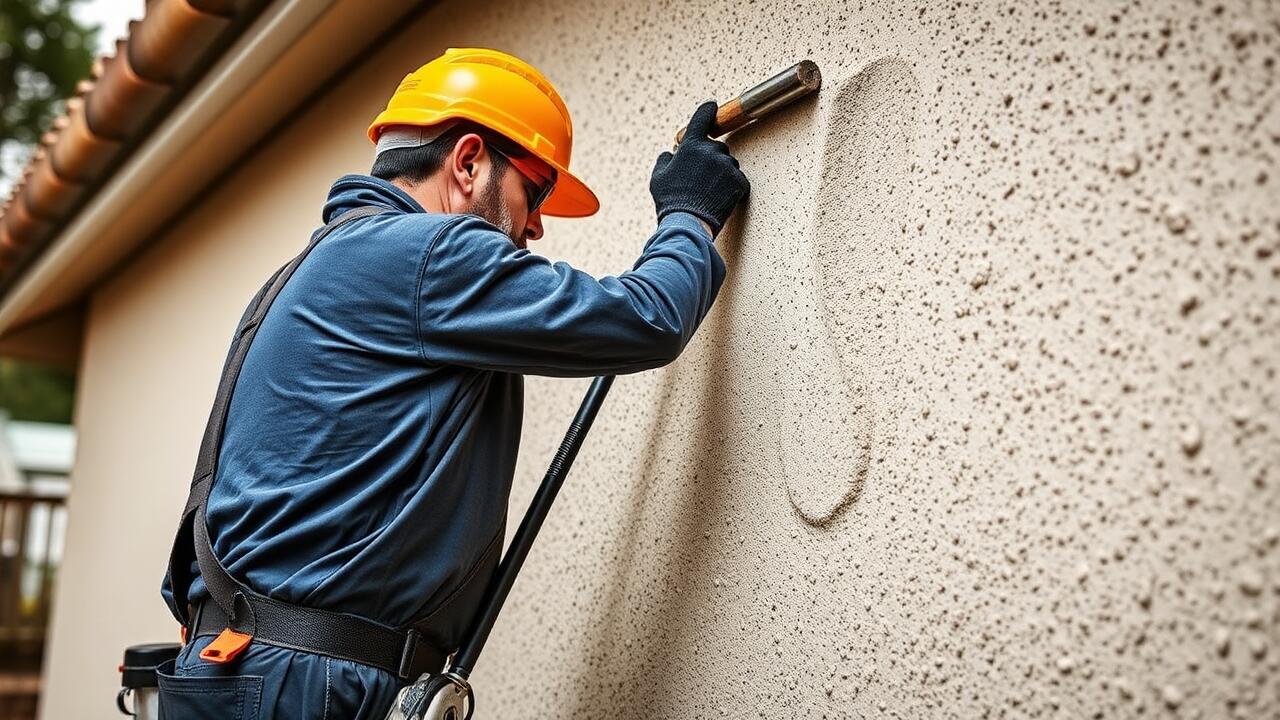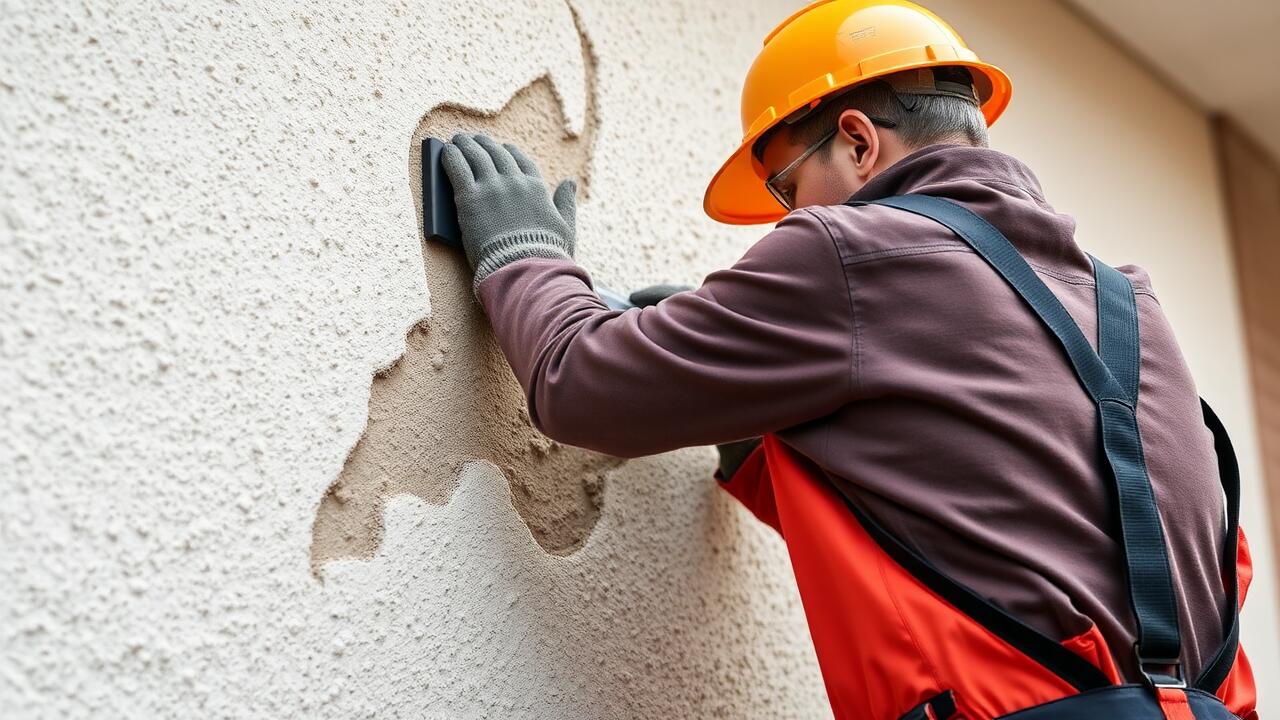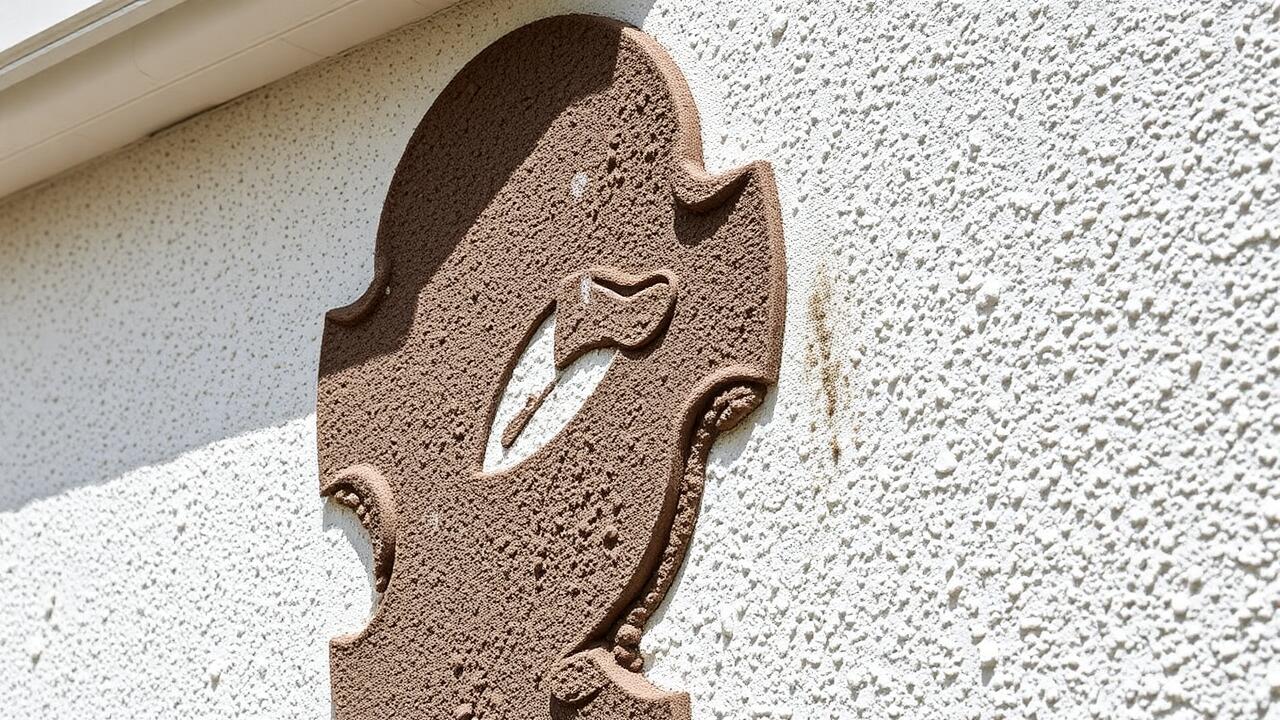
Repairing Impact Damage
Repairing impact damage requires a thorough assessment of the affected area to determine the extent of the damage. Professionals often use various methods tailored to the specific material involved. For instance, in concrete surfaces, techniques like patching or resurfacing may be effective, while damaged stucco might necessitate techniques such as reapplication or texturing to match the surrounding area. Expertise in these practices is crucial to ensure that repairs not only restore the aesthetic appeal but also enhance structural integrity.
In regions like Silver Lake Heights, Los Angeles, stucco repair services are particularly sought after due to the prevalence of this material in residential buildings. Selecting the right repair method involves considering factors such as climate, the likelihood of further impacts, and the overall design. The choice of materials used in repairs is equally important. Quality stucco products are essential to achieve a seamless finish and long-lasting durability. Careful material selection alongside professional repair methods can significantly mitigate future risks of impact damage.
Understanding Repair Methods and Their Efficacy
Repairing impact damage requires a thorough understanding of various repair methods and their respective efficacies. Techniques such as patching, resurfacing, and full replacement all have different implications based on the nature of the damage and the materials used. Patching may be suitable for minor dings or cracks, while resurfacing offers a more comprehensive solution for larger affected areas. Selection of the appropriate method often hinges on assessing the extent of the damage and the long-term durability required for the repaired surface.
In regions like Canoga Park, Los Angeles Stucco Repair services play an essential role in maintaining structural integrity following impact incidents. When assessing repair options, it is crucial to evaluate the compatibility of repair materials with the existing structure. High-quality, durable materials can enhance the longevity of repairs, while subpar options might lead to repeated failures. Understanding the specific requirements of stucco repairs can guide homeowners and contractors to make informed decisions, ensuring both immediate repair needs and future resilience are accounted for.
The Role of Material Selection
Material selection plays a crucial role in mitigating the risks associated with impact damage. Different materials exhibit varying levels of resistance to impact forces, which can influence both the longevity and effectiveness of repairs. For instance, materials such as fiberglass or high-density polyethylene are often favored for their ability to absorb shocks without compromising structural integrity. Understanding the specific demands of an environment allows for better decision-making when it comes to choosing materials, ultimately leading to safer and more durable applications.
In residential areas like Silver Lake Heights, Los Angeles, stucco repairs must also consider the impact of local weather conditions on material performance. The choice of stucco formulations can significantly affect how well a structure withstands potential impacts. By utilizing materials that not only adhere well to local architectural styles but also provide robust protection against physical damage, homeowners can enhance both the aesthetic and functional resilience of their properties. This targeted approach helps ensure that repairs are effective and sustainable over time.
Choosing Materials That Resist Impact Damage
Material selection plays a crucial role in minimizing the risk of impact damage. The right materials can significantly enhance the durability and resilience of structures, making them less susceptible to various forms of stress. For instance, using impact-resistant siding and specialized sealants can create barriers that absorb and distribute the energy from impacts, reducing the chances of cracks and structural failure. When considering options, it’s essential to evaluate materials based on their performance characteristics, such as tensile strength and flexibility.
In Silver Lake Heights, Los Angeles, stucco repair services often emphasize the importance of using weather-resistant and flexible materials. By opting for high-quality stucco mixes with improved adhesion and reduced porosity, homeowners can achieve better protection against harsh environmental conditions. Advanced formulations can also help in preventing moisture ingress, which can weaken structural integrity over time. Choosing these materials not only enhances aesthetic appeal but also contributes to long-term maintenance and safety.
Industry Standards and Guidelines
Industry standards and guidelines play a crucial role in managing impact damage effectively across various sectors. These regulations are designed to ensure safety and consistency in repair practices, focusing on materials, workmanship, and long-term durability. Companies must adhere to established frameworks to minimize risks associated with impact damage and protect both properties and individuals. This approach promotes accountability and helps maintain quality in repair work.
In areas like Silver Lake Heights, Los Angeles, stucco repair services must follow these industry standards to guarantee reliable outcomes. Local regulations often encompass specific requirements related to the materials used, installation techniques, and inspection protocols. By abiding by these guidelines, contractors can provide clients with assurance that their repair projects are managed carefully and will withstand the challenges over time.
Key Regulations Governing Impact Damage Management
Regulatory frameworks have been established to address impact damage across various industries. These regulations aim to minimize risks associated with material failures due to external forces. For example, specific guidelines dictate testing methods for the durability of construction materials, ensuring that they can withstand potential impacts. Compliance with these regulations is crucial not only for safety but also for mitigating financial losses that can arise from damages.
In the realm of construction and maintenance, local standards play a significant role in the handling of impact damage. Companies, like Canoga Park, Los Angeles Stucco Repair, adhere to these guidelines to provide durable and reliable solutions for property owners. By following established regulations, businesses can enhance their reputation and provide reassurance to clients regarding the longevity of their repairs. Understanding and implementing these standards is essential for effective impact damage management within the industry.
FAQS
What is impact damage?
Impact damage refers to the harm or deterioration that occurs when an object collides with another object or surface, often resulting in structural or superficial damage.
How can I identify impact damage?
Signs of impact damage may include visible dents, cracks, or deformation of materials, as well as any functional issues that arise after an impact event.
What repair methods are available for impact damage?
Common repair methods include patching, welding, and replacing damaged components, with the choice of method depending on the severity and location of the damage.
Why is material selection important in preventing impact damage?
Selecting the right materials that have high resistance to impact can significantly reduce the likelihood of damage occurring during collisions or impacts.
What industry standards should I be aware of regarding impact damage?
Industry standards vary by sector, but key regulations often include guidelines on material performance, repair procedures, and safety measures to mitigate impact risks.



